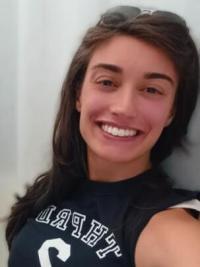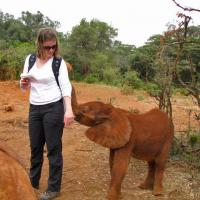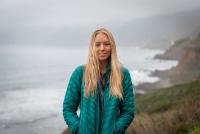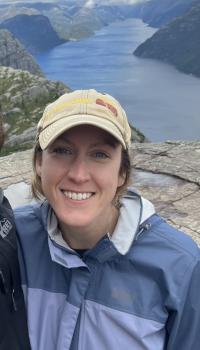California Sea Grant is pleased to announce a new team of science writers has joined the program. The six-member team will bolster outreach and increase exposure for roughly 100 projects in marine research, extension and education funded by California Sea Grant and its partners.
“California Sea Grant works with hundreds of institutions, organizations and partners across academia, government, industry and NGOs to address critical coastal issues and science-based decision making,” says California Sea Grant Director Shauna Oh. “We have more and more science and real-world applications that are worth sharing and this team of science writers will enable us to communicate them to a range of audiences from the scientific community to the public at large.”

Lena Beck, a science communicator, joins us from Montana. She recently finished a master's degree in environmental science and natural resource journalism from the University of Montana and loves writing about fish and aquaculture. The majority of her work focuses on environmental issues and sustainable food systems. You can find her written work and photography in The Counter, Coastal Review Online, The Guardian and other publications. Additionally she is a former podcast producer for Montana Public Radio. Outside of work she loves hiking, kayaking and swimming in Montana's mountains and lakes. She also loves to garden — particularly herbs and vegetables.

Another member of the team is Ute Eberle, a science writer with bylines in many national and international publications including The New Scientist, Hakai Magazine and Knowable Magazine. She lives in Maryland with her husband and two dogs.
California-based journalist Clare Leschin-Hoar has over 20 years of experience covering a wide array of food policy topics including the complex issues surrounding sustainable seafood, fishing and aquaculture; food production, food safety, food waste and more. Her work frequently focuses on the intersection of food, health and our environment and has appeared in top tier publications including NPR, The Guardian, Boston Globe, Scientific American, Eating Well, Cooking Light, Sunset and many more.

Erin Malsbury, a freelance science journalist and photographer in Santa Cruz also joins the team. She studied ecology and anthropology at the University of Georgia and earned her master’s in science communication from UC Santa Cruz. After work, you can find her surfing, climbing, making ceramics or diving.

Boyce Upholt from New Orleans is a writer and editor who has written for National Geographic, The Atlantic and The New Republic, among other outlets. He is currently working on a book about the Mississippi River for W.W. Norton. He enjoys kayaking (or any activity that gets him outside) and trying to learn how to cook.

Formerly a science communications specialist for the National Oceanic and Atmospheric Administration, Katie Valentine joins the team from Washington, D.C. She has a background in environmental journalism and communications and earned an undergraduate degree in journalism and a Master of Arts in geography. Additionally, Valentine serves as a climate editor for Science Feedback, a nonprofit fact-checking organization. In her free time, you can find her birding, running, making never-ending edits to the novel she's working on and making good use of Washington, D.C.'s public pools.
Since first being funded by the NOAA in 1968, California Sea Grant has grown from a pilot project at Scripps Institution of Oceanography to create a graduate marine science education program for California. It now manages an average of $9 million annually in federal and state funds to support research, extension, outreach and education. Every year, California Sea Grant funds more than 75 research and outreach projects at public and private institutions throughout the state and nation to benefit the communities, industries and people of California. An analysis in 2018 showed that California Sea Grant brings an estimated $78.9 million in economic impact and benefits to the state per year, including benefits from ecosystem restoration, management of invasive species and fisheries management, as well as through costs avoided from coastal hazard preparedness.
About California Sea Grant
NOAA’s California Sea Grant College Program funds marine research, education and outreach throughout California. Headquartered at Scripps Institution of Oceanography at the University of California San Diego, California Sea Grant is one of 34 Sea Grant programs in the National Oceanic and Atmospheric Administration (NOAA), U.S. Department of Commerce.